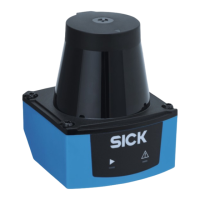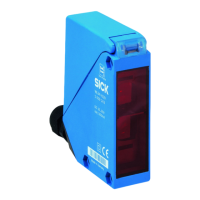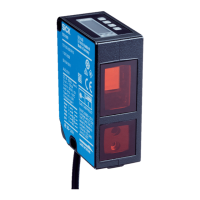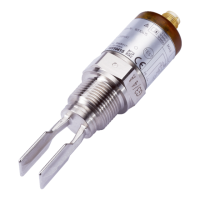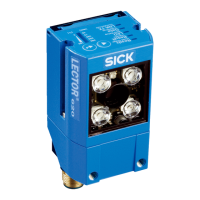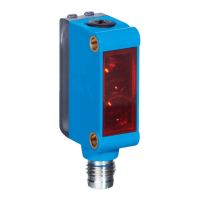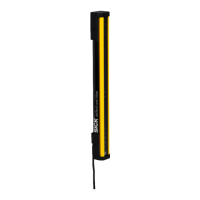Shiny surfaces have different remission values at the same distance with different
angles of impact. In the case of shiny surfaces, maximum remission is achieved when
the beam makes vertical impact.
Matt and dull surfaces have diffuse remission. Therefore, they exhibit similar relative
remission values with the same angle of impact regardless of the distance from the
zero point.
Table 4: Typical remission values of frequently used materials
Material Typ. relative remission value
Rubber tires (vulcanized, black) 2%
Foam rubber (black) 2.4%
Photographic board (black, matte) 10%
Cardboard (gray) 20%
Wood (untreated fir, soiled) 40%
PVC (gray) 50%
Paper (white, matte) 80%
Plaster (white) 100%
Aluminum (black anodized) 110 … 150%
Steel (stainless, shiny) 120 … 150%
Steel (high gloss) 140 … 200%
Reflection
Most surfaces produce a diffuse reflection of the laser beam in all directions. The
structure (smooth or rough), shape (flat or curved), and color (light or dark) of the
surface determine how well the laser beam is reflected.
On very rough surfaces, a large proportion of the energy is lost due to absorption.
Curved surfaces produce a higher diffusion. Dark surfaces reflect the laser beam worse
than light ones (brilliant white plaster reflects approx. 100% of the light, while black
foam rubber reflects approx. 2.4%). The aforementioned surface characteristics can
reduce the scanning range of the device, in particular for surfaces with low remission
values.
Figure 8: Reflection of light on the surface of the object
Angle of reflection
The angle of reflection corresponds to the angle of incidence. If the laser beam hits
a surface at right angles, the energy is optimally reflected. If the laser beam hits a
surface at an oblique angle, energy and range are lost accordingly.
PRODUCT DESCRIPTION 3
8025144//2021-07-21 | SICK O P E R A T I N G I N S T R U C T I O N S | TiM55x/56x/57x/58x
17
Subject to change without notice

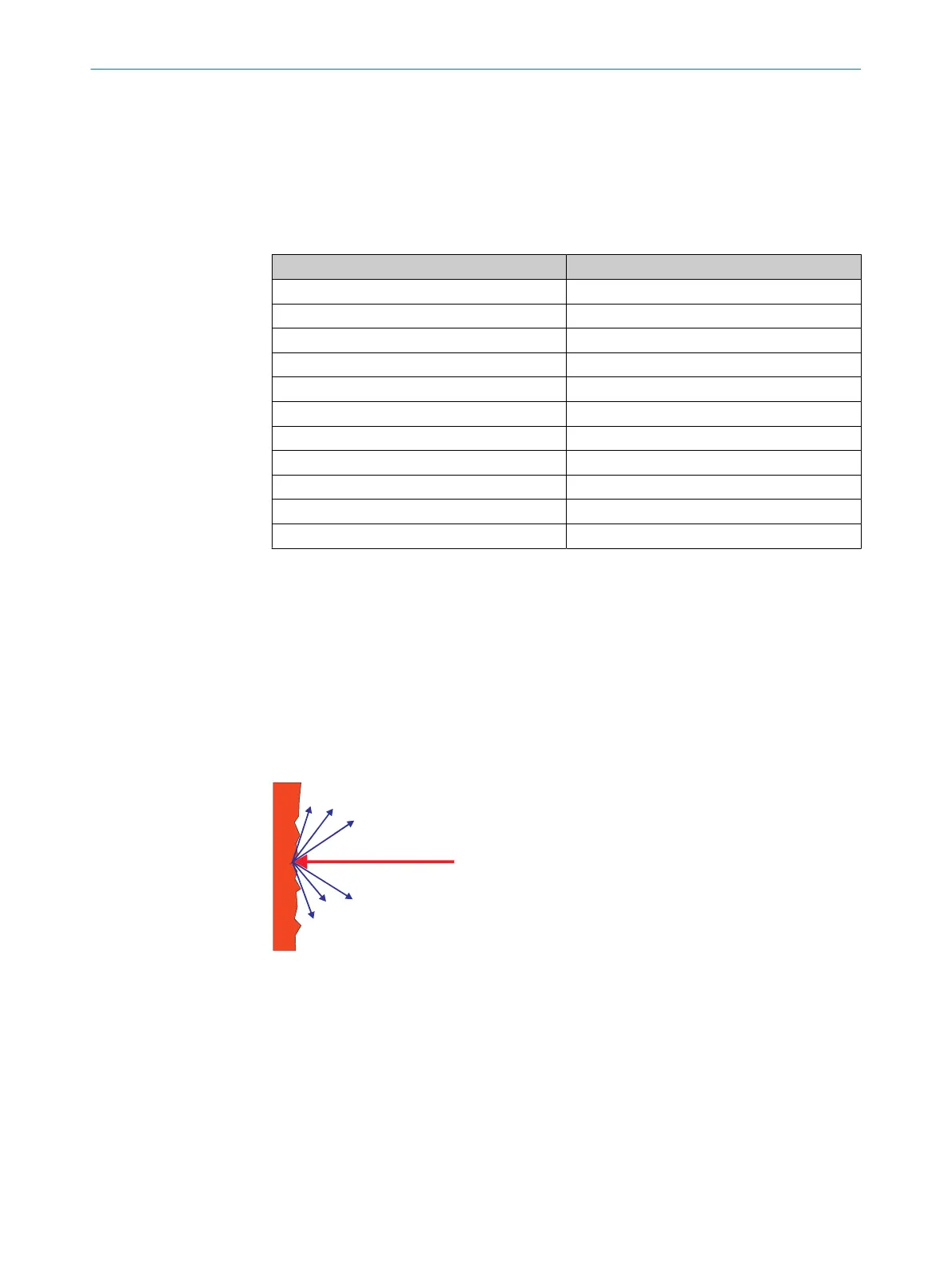